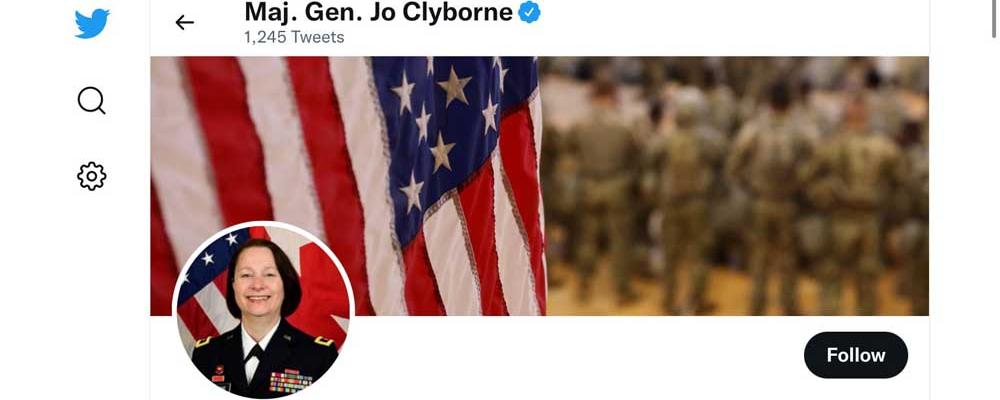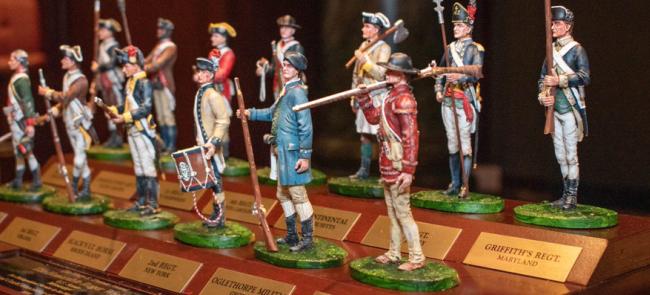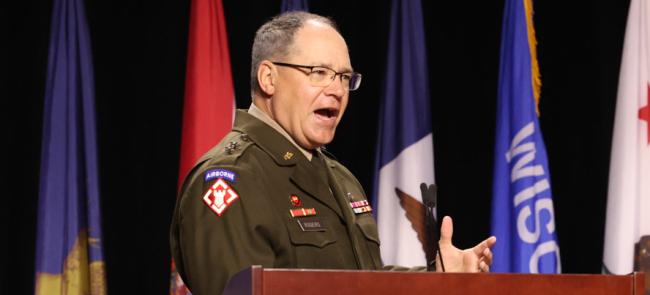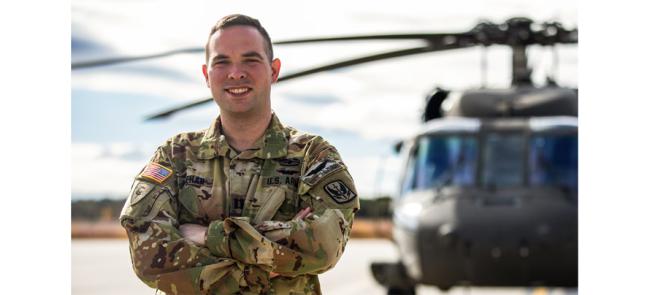
Military Influencers
It started with a single tweet, an accusation that a U.S. service member had shared an unsolicited picture of his genitals via social media.
The online conversation grew as more women stepped forward online to accuse the Marine, allegedly a noncommissioned officer, of a long-running pattern of harassment targeting vulnerable women, including some in the military.
That exchange caught the attention of a senior National Guard officer. Maj. Gen. Johanna Clyborne, the assistant adjutant general of Minnesota and deputy commanding general of the U.S. Army Cyber Center of Excellence at Fort Gordon, Georgia, waded into the fray Jan. 1 with a tweet of her own.
“If you know the identity of the NCO who was DMing inappropriate pictures please DM me that individual’s information and unit if known,” wrote Clyborne, who also serves as chair of the NGAUS Cyber Task Force and is an attorney in her civilian career.
In the days that followed, military officials confirmed that more than 30 women had come forward following Clyborne’s request, with the Marine Corps also launching an investigation into the accused, who tweeted using the name @USEmCee.
Clyborne, too, was thrust into the spotlight. An active user of social media, she has been praised for her handling of the situation and for ensuring that complaints reached the appropriate channels.
“This is not good leadership, rather this is the bare minimum floor leaders owe all our service members,” she tweeted hours after first requesting the Marine’s identify and unit.
The Jan. 1 exchange highlights the good and the bad of social media and the military, a partnership that can include both senior leaders and anonymous accounts with tens of thousands of followers.
In recent years, social media has become a recruiting tool, an opportunity to close the civil-military divide and an important platform for professional development. It can also help bring levity to military life and help service members form fraternal bonds.
But as unit social media accounts have become the norm and more military leaders build online presences, risks, too, have grown.
“There’s a huge difference between influencer and a good influence. You have to be careful as a leader to recognize that difference,” says Steve Leonard, a former Army strategist who posts online using the moniker Doctrine Man. “Someone can have 100,000 followers on Twitter or 50,000 on Facebook, it doesn’t mean they are a good influence, it means they’re an influence.”
Leonard, a retired colonel and now a professor at the University of Kansas, began Doctrine Man as a series of snarky cartoons included in a regular professional development email among his fellow doctrine writers. As the distribution list grew, he turned to social media, first Facebook and then Twitter.
Today, he has a following of more than 200,000 people across the two platforms, including many military leaders.
“It was a way to drive discussion,” he says of the early days of Doctrine Man. “Typically professional discussion, but some of the inane discussion, too. It was meant to get people talking about topics that matter to us as a profession and a community.”
There have always been senior leaders who were there. ... They just weren't as public. ... They lurked.
—Retired Col. Steve Leonard, Doctrine Man on Facebook and Twitter
After more than a decade online, Leonard has watched closely as leaders at all echelons have adapted to the growth of social media.
“There have always been senior leaders who were there,” he says of top brass on popular platforms. “They were there, they just weren’t as public. They didn’t engage as much. They were aware of it. They knew about it. They lurked.”
That’s all changed as leaders who are more comfortable with social media have risen through the ranks.
If done well, social media is an important conduit between leaders and their troops, Leonard says. And it’s part of an evolution from phone trees, to text chains to Facebook pages for important command information.
There’s absolutely value for leaders there, he says. But he cautioned that an online platform can also feed into bad leadership traits. Good leaders on social media engage their audience, Leonard says. They are informative, not preachy.
But there are risks, too.
“You’re going to get attacked,” Leonard says. “You can’t go on social media today without somebody coming back at you and saying something obnoxious.”
Leonard compared social media to a burn barrel at midnight. It’s a gathering place, but you can’t always see who is there and who is offering their opinions. “You have to be careful who you engage with and what you engage with them on,” he says.
Leonard also cautioned leaders to think before they hit send online.
“I treat social media essentially the same way I treat stepping in front of a classroom,” he says. “I won’t say something in front of a group of college students that I wouldn’t say online. Assume when you put something on social media that somebody is going to screenshot it.”
While nearly all senior leaders have some sort of social media presence, many of the most popular military sites are anonymous accounts that emphasize humor.
One is The Fratty Guard, which has amassed nearly 14,000 followers on Instagram mostly by posting memes focused on the rivalry between Guard and active personnel along with some professional development advice.
The account is run by a current Guard officer who goes by the pseudonym Capt. Steele Chadwick. “I didn’t start out with any sort of grand strategy,” he says. “I had actually just come back from a deployment and was just trying to fill the hours and days before I went back to work.”
The Instagram page quickly struck a chord with Guardsmen. Now, The Fratty Guard sees itself as an ambassador of sorts for the Guard, building comradery, instilling pride and even helping to educate the active force on the unique aspects of Guard life.
The officer behind The Fratty Guard says so many military pages dabble in memes because they can convey information quickly. Some of the language can’t be repeated here, but the situations depicted are undeniably authentic, which is likely part of the appeal.
“A lot of them are mocking the ridiculousness of the military and the Army,” he says. “We use it as a way to cope with how dumb everything is.”
He values social media not only for the entertainment value, but also the speed at which information can be shared. That’s particularly valuable in the Guard, where many part-time soldiers don’t often check their military email accounts.
Social media is also a direct link among Guardsmen. And it’s a platform that can be harnessed for the betterment of the force, with room for laughs, too.
And in a sign of its popularity, The Fratty Guard offers t-shirts, patches and stickers, which, along with paper copies of its memes, are beginning to show up at training assemblies nationwide.
“I think for me one of the most interesting things about the page is I feel like its given a new pride for reservists who are used to being talked down to by the active force,” he says. “That’s the coolest thing about it, being a positive influence.”
The author, the former senior writer/editor for NGAUS, is a Columbia, South Carolina-based freelance writer.



